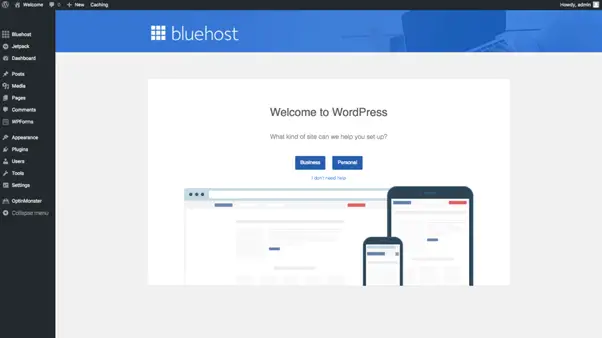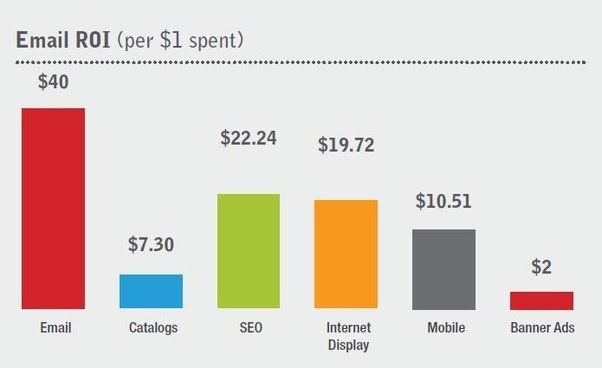Creating and managing a high-performing affiliate website is crucial for success in this digital marketing space.
In this post, I’ll guide you through setting up a resilient affiliate website that earns you money. Focus on these steps for longevity in the field of affiliate marketing:
Table of Contents
11 Easy Steps To Build An Affiliate Website
Here are quick steps on how to build a fully monetized affiliate website:
- Decide Your Niche: A niche is simply a topic or an area you’re interested in or passionate about. You must select a niche that suits your interest and target audience.
- Choose a Domain: Pick a domain name that’s reflective of your niche and appeals to your target audience. Simplicity and memorability are key.
- Select a Reliable Hosting Provider: Your website’s uptime is critical. Choose a hosting service known for consistency and excellent customer support. (Check out my recommended Web hosting service here)
- Install WordPress: Utilize WordPress for its user-friendly interface and flexibility. It’s a solid foundation for any affiliate website.
- Pick a Theme: Use a theme that is responsive, fast, and customizable. Your site needs to look great and function well on all devices.
- Implement Essential Plugins: Aim for a blend of functionality and performance. Integrate an SEO plugin like Yoast SEO, a caching plugin such as WP Rocket, and a security plugin similar to Wordfence to guard your site against attacks.
- Create Engaging Content: Your site thrives on quality content that serves your audience’s needs. Invest time in articles that provide value and establish authority in your niche or industry.
- Optimize for SEO: Use keyword research tools to target terms your audience is searching for. Apply on-page SEO best practices to rank higher in search results.
- Leverage Email Marketing: Develop a subscriber list to nurture leads. Automated email campaigns can keep your audience engaged and encourage repeat traffic.
- Monitor Your Performance: Analyze your traffic with tools like Google Analytics. Use the insights to refine your strategy and content.
- Regularly Update Your Site: Stay current with content updates, plugin upgrades, and WordPress releases. A website’s maintenance is never a one-time task.
PS. Be patient and put in consistent effort to make gradual improvements to your website over time.
Pay close attention to user feedback and adapt your strategy to meet changing market conditions and audience preferences.
PS. Check out my recommended web hosting service with free 3000 original SEO articles and +500 natural dofollow backlinks.
How To Build And Maintain Your Affiliate Website
This guide provides a step-by-step walkthrough on how to build and maintain an affiliate website that generates results.

Step 1. Decide On Your Niche
Selecting the right niche is the foundation for a successful affiliate website.
It’s essential to choose a niche or topic that not only aligns with your personal interests but also caters to the needs and preferences of your ideal customer or target audience.
Remember this – your passion or interest in the niche you choose will fuel your dedication and make the journey more enjoyable.
To decide on your niche, consider conducting thorough research to identify profitable and in-demand niches.
Look for a balance between your interests and market demand.
Additionally, analyze the competition within the chosen niche.
Finding a niche with a manageable level of competition increases your chances of standing out or succeeding in that niche.
IMPORTANT: When choosing a niche:
- Think about your target audience
- Understand their pain points, interests
- And what they’re searching for online.
This knowledge will guide you in creating content that resonates with your audience, increasing the likelihood of successful affiliate partnerships.
I want you to remember – a well-defined niche will allow you to establish yourself as an authority or expert, making it easier to attract both readers and potential affiliate partners.
By selecting a niche wisely, you set the stage for a more focused and effective affiliate marketing strategy.
- P.S. I wrote another article where I share with you some of the profitable niches in affiliate marketing. Check it out.

Step 2. Choose A Domain Name
Choosing a domain name is a crucial step in building your affiliate website.
A memorable and relevant domain name enhances your site’s brand and makes it easier for visitors or readers to remember.
I want you to aim for simplicity and avoid complex or hard-to-spell words to ensure easy recall.
Don’t know how to decide on your domain name?
- Start by brainstorming keywords related to your niche. These keywords can reflect the essence of your content and help with search engine optimization.
- Once you have a list, combine or modify them to create a unique and brandable domain name.
- Consider using your niche or a relevant term to convey the website’s purpose clearly.
Keep the domain name concise, avoiding unnecessary words or characters.
Shorter names are not only easier to remember but also less prone to typos.
Ensure the name doesn’t infringe on trademarks and has an available matching social media handle.
Also, you want to choose a domain extension that suits your website’s purpose.
While .com is widely recognized, niche-specific extensions like .tech or .blog can also be effective.
Verify the domain’s availability and register it promptly to secure your online identity.
In summary, selecting a domain name involves a blend of creativity, relevance, and practicality.
A well-chosen domain sets the tone for your affiliate website and contributes to its overall success.
Step 3. Select A Reliable Hosting Provider
Choosing a reliable hosting provider is a pivotal decision in ensuring the smooth functioning of your affiliate website.
You want to start by assessing your website’s needs, considering factors like:
- traffic volume
- Storage requirements
- And potential growth.
This understanding will guide you in selecting an appropriate hosting plan.
Here are some things to look for when picking a web hosting service for your affiliate blog or website:
- Look for a hosting provider with a solid reputation for reliability and uptime.
- Read customer reviews and testimonials to gauge the experiences of other users. Reliable customer support is also crucial, especially if you’re new to website management.
- Opt for a provider that offers responsive support through various channels.
- Consider the hosting infrastructure, as it directly influences your website’s speed and performance. Reliable hosting providers invest in robust servers and technologies to ensure optimal user experiences.
- Check for features like automatic backups and security measures to safeguard your website from potential threats.
Additionally, you’ll want to evaluate the scalability options provided by the hosting service.
As your affiliate website grows, you may need additional resources.
PS. Check out my recommended web hosting service here. They offer you free 3000 original SEO articles, +5000 natural do-follow backlinks, free site migration, and a free domain name.
Step 4. Install WordPress To Build Your Site

Setting up your affiliate website using WordPress, a user-friendly content management system (CMS), is a straightforward process.
Follow these step-by-step instructions to get started:
Install WordPress:
- As you have purchased your hosting plan, you’ll want to install WordPress through your hosting provider’s control panel.
Accessing WordPress Dashboard:
- Log in to your WordPress dashboard. The login URL is typically “yourdomain.com/wp-admin.”

Choosing a Theme:
- Navigate to “Appearance” and select “Themes.”
- Browse and choose a theme that aligns with your website’s niche and aesthetics.
Installing Essential Plugins:
- Explore “Plugins” and add essential tools like Rank Math, Yoast SEO for optimization, Akismet for spam protection, Wordfence to protect your site against hackers, and a social media sharing plugin.
Customizing Site Settings:
- Access “Settings” to configure general site settings, including title, tagline, and time zone.
Creating Pages:
- Craft core pages like “Home,” “About Us,” “Contact,” and any other relevant pages.
Use the “Add New” option under “Pages” to create content.
Setting Up Categories and Tags:
- Organize your content by creating relevant categories and tags.
Writing and Publishing Content
- Use the “Posts” option to create and publish your affiliate content.
- Leverage the block editor for easy content creation and formatting.
Configuring Menus:
- Build and customize your website’s navigation through “Appearance” and “Menus.”
Optimizing for SEO:
- Utilize the Yoast SEO plugin to optimize your content for search engines.
Remember to regularly update your content, monitor website performance, and stay engaged with your audience.
With WordPress, you have a versatile platform that allows for easy customization and growth as your affiliate website evolves.
Step 5. Produce High-Quality Content
Online content is king, high-quality content is the lifeblood of every successful affiliate website.
It plays a pivotal role in attracting and retaining visitors while driving sales or conversions.
To ensure your affiliate site succeeds or stands out, you want to focus on creating engaging and valuable content with the following tips.

1. Know Your Audience
Understand the needs and preferences of your target audience. Tailor your content to address their specific need, pains, and challenges.
2. Provide Valuable Information
Offer insightful and relevant information in your niche. Whether it’s product reviews, how-to guides, tutorials, or industry insights, make sure your content adds value to your audience’s life.
3. Be Authentic
Share your personal experiences and opinions. Authenticity builds long-lasting trust with your audience and enhances your credibility as an affiliate marketer.
4. Visual Appeal
Incorporate engaging visuals, such as images, infographics, and videos, to break up text and make your content more visually appealing.
5. Optimize Your Content For SEO
Use relevant keywords strategically to improve your content’s search engine visibility.
This will attract organic traffic and increase the likelihood of affiliate link clicks.

6. Encourage User Interaction
Foster a sense of community by encouraging comments, questions, and social media engagement. Responding to user comments or interactions builds a loyal audience.
7. Consistency is Key
Maintain a consistent posting schedule to keep your audience engaged. Regular updates signal to both users and search engines that your website is active and relevant.
I want you to take note of this: Quality content not only attracts visitors but also encourages them to take desired actions, such as clicking on affiliate links.
By prioritizing relevance, authenticity, and engagement, you can create content that resonates with your audience and drives success for your affiliate website.
- Recommended Reading: How To Write Content For An Affiliate Website
Tips For Maintaining Your Affiliate Website
Regular website maintenance is essential for optimal performance and security.
Follow these tips to keep your affiliate website in top shape:

Update Content Regularly:
You want to keep the content on your content fresh and relevant.
Regularly update your old blog posts, product reviews, and any other information on your site to improve search engine rankings.
Software Updates:
You’ll want to update your content management system, plugins, and themes regularly.
These updates often include security patches and improvements that help protect your website from attacks or vulnerabilities.
Backup Your Website:
Schedule regular backups of your website’s data and files.
Why? In case of any unforeseen issues or security breaches, having a recent backup ensures you can restore your site quickly when it breaks down.
Security Measures:
Implement security plugins and measures to protect against potential threats.
Use strong passwords, enable two-factor authentication, and monitor your website for suspicious activity.
Check Affiliate Links:
Periodically review and update your affiliate links.
Ensure they are still valid and lead to the correct products or services. Broken links can negatively impact user experience and your site’s SEO.
Optimize Images:
Compress and optimize images to improve website loading times.
A faster website not only enhances user experience but also positively influences search engine rankings.
Monitor Website Performance:
Regularly check your website’s performance using tools like Google PageSpeed Insights.
Address any issues affecting speed and responsiveness to enhance user satisfaction.
Review Analytics:
Analyze website analytics to understand user behavior, popular content, and referral sources.
Use this data to refine your content strategy and improve overall user experience.
OVERVIEW!
By incorporating these maintenance tips into your routine, you’ll ensure your affiliate website remains secure, up-to-date, and capable of delivering an excellent user experience.
How To Choose An Affiliate Program Based On Your Website Niche
Selecting the right affiliate programs is crucial for the success of your website and aligning with your niche and target audience is key.
Here are steps to help you choose the most suitable affiliate programs:

- Relevance to Your Niche: Opt for affiliate programs that align closely with your website’s niche. The more relevant the products or services are to your content, the higher the likelihood of conversions.
- Product Quality and Reputation: Choose affiliate products or services with a solid reputation and positive reviews. Promoting high-quality items enhances your credibility and fosters trust among your audience.
- Commission Structure: Examine the commission rates offered by the affiliate program. Balance the desire for higher commissions with the relevance and quality of the products.
- Cookie Duration: Check the cookie duration of the product, this determines how long you earn commissions after a user clicks on your affiliate link. Longer durations provide more opportunities for conversions.
- Marketing Resources: Look for affiliate programs that offer marketing resources, such as banners, product images, and promotional content. These resources can simplify the promotion process and enhance the visual appeal of your website.
- Affiliate Support: Consider the level of support provided by the program. Responsive affiliate managers and a comprehensive support system can be invaluable, especially if you’re just starting out.
- Track Record of Payouts: Research the program’s track record in terms of timely and reliable payouts. Ensuring a consistent and transparent payout process is essential for a positive affiliate marketing experience.
By carefully considering these factors, you can choose affiliate programs that complement your niche, and resonate with your ideal customers, or targeted audiences.
And contribute to the overall success of your affiliate website.
Best Monetization Strategies For Your Website
Diversifying monetization methods is crucial for sustaining revenue on your affiliate websites.
Below are some effective strategies to explore:
Affiliate Marketing
The core strategy involves promoting products or services and earning a commission for each sale generated through your unique affiliate link.
For better results with affiliate marketing business, you want to choose reputable products aligned with your niche and target audience’s needs.

Sponsored Content
Collaborate with brands for sponsored content. Create engaging posts that seamlessly integrate the sponsor’s products or services into your content.
Ensure transparency with your audience about sponsored content.
Display Ads
Incorporate display ads strategically within your website.
Utilize platforms like Google AdSense, Ezoic, Mediavine, and Adthrive to display relevant ads based on your content.
Optimize ad placements for a balance between user experience and revenue generation.
Email Marketing
Build a subscriber list and engage in email marketing. Promote affiliate products directly to your audience through newsletters, ensuring your content adds value and encourages clicks.

Create and Sell Digital Products
Develop and sell your digital products, such as e-books, online courses, or exclusive content.
This approach allows you to retain a larger share of the revenue.
- Recommended Reading: Learn Different Ways To Monetize a Website
That’s It, Folks!
Creating an affiliate website is not as hard as it used to be there are some video tutorials on YouTube to learn how to create your affiliate website. Simply:
- Choose your niche market (topic): Make sure you target a single niche on your website. A single niche website will always help you in affiliate marketing. Having a single niche will also help in targeting the exact audience to sell products
- Choose a good domain name and hosting account: You don’t want to work up one day and see that your site is down. You want to pick a good hosting for your site.
- Select a website builder. WordPress is easy to learn
RECOMMENDED READING:






